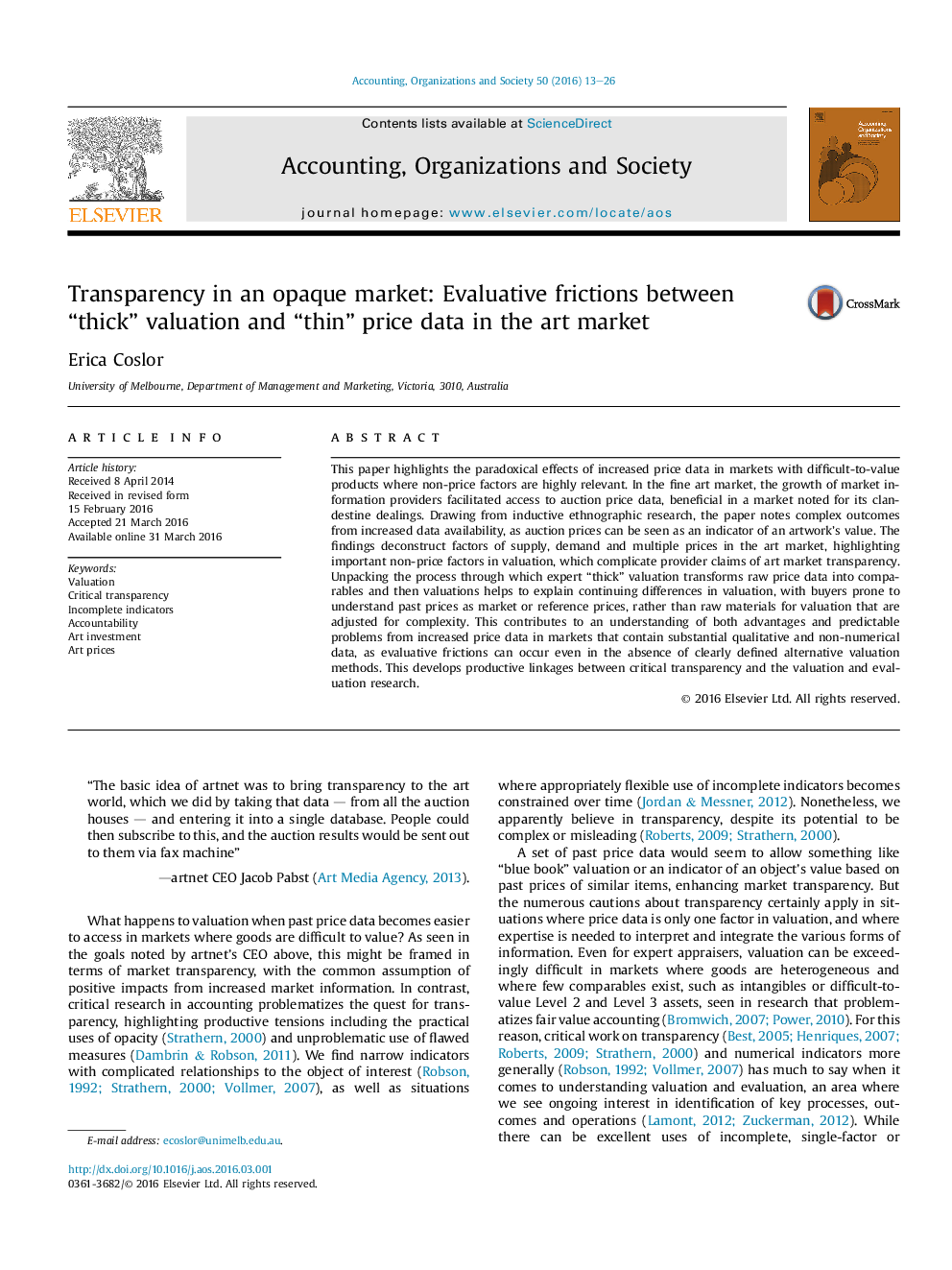| Article ID | Journal | Published Year | Pages | File Type |
|---|---|---|---|---|
| 878508 | Accounting, Organizations and Society | 2016 | 14 Pages |
This paper highlights the paradoxical effects of increased price data in markets with difficult-to-value products where non-price factors are highly relevant. In the fine art market, the growth of market information providers facilitated access to auction price data, beneficial in a market noted for its clandestine dealings. Drawing from inductive ethnographic research, the paper notes complex outcomes from increased data availability, as auction prices can be seen as an indicator of an artwork’s value. The findings deconstruct factors of supply, demand and multiple prices in the art market, highlighting important non-price factors in valuation, which complicate provider claims of art market transparency. Unpacking the process through which expert “thick” valuation transforms raw price data into comparables and then valuations helps to explain continuing differences in valuation, with buyers prone to understand past prices as market or reference prices, rather than raw materials for valuation that are adjusted for complexity. This contributes to an understanding of both advantages and predictable problems from increased price data in markets that contain substantial qualitative and non-numerical data, as evaluative frictions can occur even in the absence of clearly defined alternative valuation methods. This develops productive linkages between critical transparency and the valuation and evaluation research.
